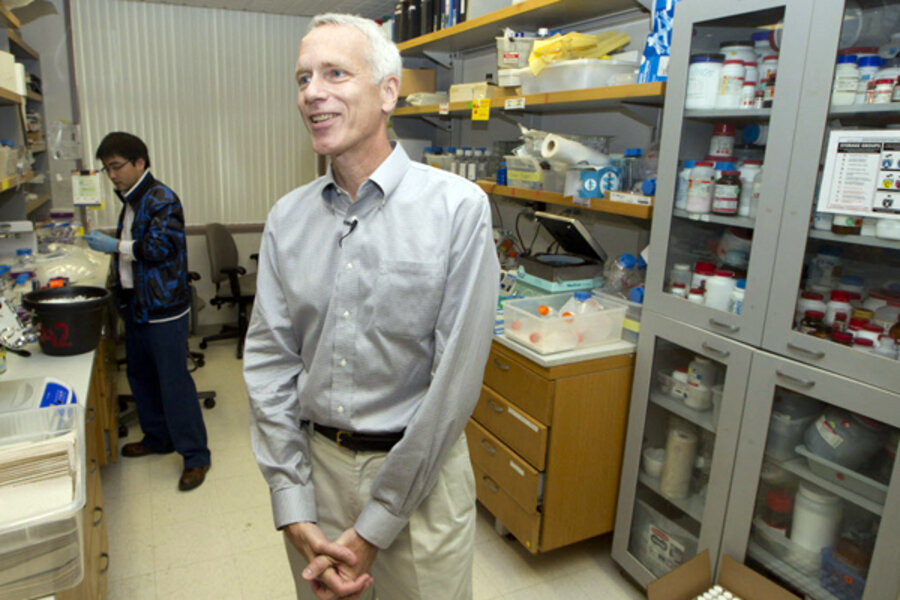Chemistry Nobel could lead to drugs with fewer side effects
Loading...
Two US researchers have been awarded the Nobel Prize in Chemistry for uncovering and mapping a key mechanism used by cells to detect and respond to the presence of hormones and other chemicals they encounter, a mechanism seen as vital to the pharmaceutical industry’s development of new drugs.
The prize, which carries an 8 million krona ($1.2 million US) purse, was given to Robert Lefkowitz of Duke University in Durham, N.C., and the Maryland-based Howard Hughes Medical Institute, and to Brian Kobilka of Stanford University in Palo Alto, Calif.
The two were awarded for work on a family of proteins embedded in cell walls that detect the presence of a hormone such as adrenaline outside a cell, then conduct that information through the cell wall to a protein switch inside that touches off a cell's response.
The cellular sensors, dubbed G-protein-coupled receptors (GPCRs), help coordinate "an orchestrated response from billions of individual cells that make up our bodies" as the cells respond to an outside stimulus, said Sven Lindin, chairman of the committee awarding the chemistry prize. One such stimulus: the startling, raucous appearance of a ghoul at a Halloween haunted house.
The receptors have become prime targets for new drugs to treat a range of diseases, he added at a press conference on Wednesday announcing the award. By some estimates, roughly half of all the drugs used today rely on GCPRs as pathways for affecting the cells of interest. Armed with a knowledge of the receptor molecule's unique pattern of folds when it's triggered, he adds, pharmaceutical companies are working to develop new drugs that have fewer side effects.
The notion that cells must have some mechanism for sensing their environment emerged toward the end of the 1800s, researchers say, but no one succeeded in identifying the sensors cells use.
Indeed, "when I started doing my work 40 years ago, there was still huge skepticism as to whether things like receptors really existed – even from some people who were central in pharmacology," said Dr. Lefkowitz in an interview for Nobel.org.
He found receptors by adding tiny quantities of radioactive iodine to a hormone. Once the hormone bound itself to receptors, Lefkowitz and his team could pinpoint them.
In the meantime, other researchers were trying to identify the molecular switch that triggers a cell’s response once it sensed a change in the environment outside the cell. Indeed, two other American biochemists shared a Nobel Prize in Chemistry in 1994 for uncovering that internal switch, known as a G protein.
Dr. Kobilka joined Lefkowitz's team and found a way to isolate the gene that carried the genetic code for the specific receptor they worked with. In effect, the gene pointed to a receptor structure that resembles a noodle folded back on itself seven times and gathered into a bundle. That bundle extends all the way through the cell wall. When a bit of hormone binds to the receptor on the outside of the cell, the full length of the bundle changes shape, allowing the inside ends to bind to a G protein. Once activated, the G protein breaks up, setting off other chemical reactions that form the cell's response to the hormone's presence.
Kobilka later moved to Stanford University's School of Medicine, where last year he used X-ray crystallography to capture an image of the receptor and a G protein as the receptor passed its information along. The image revealed the structure of the altered receptor, which researchers say is useful for developing new pharmaceuticals.
Lefkowitz and Kobilka will receive their award Dec. 10 at a ceremony in Stockholm.







